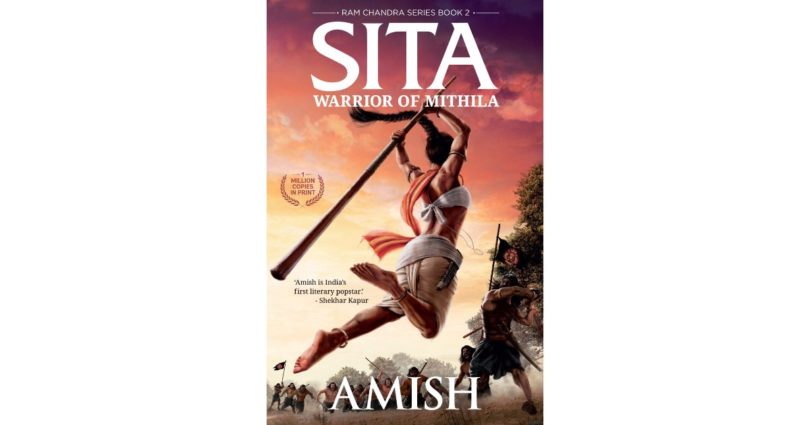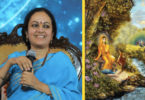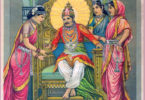Sita: Warrior of Mithila is the second book of Ramachandra series authored by Amish Tripathi. The book was preceded by Scion of Ikshwaku and will be succeeded by Raavan: Orphan of Aryavarta.
This book is a retelling of Ramayana and narrates the various stage of Sita’s life. Unlike the usual portrayal of Lady Sita as a demure princess and faithful wife, Amish’s Sita is a fierce warrior, an able administrator and a master strategist throughout the book.
While Scion of Ikshwaku focused on the life of Lord Ram, this book is a parallel narrative of Lady Sita. According to the author, the first two books of Ram and Sita and the third book belonging to Lankan king, Raavan have a common ending – the abduction of Lady Sita by the Lankan forces. The fourth and fifth book will be a combined storytelling of the later accounts of Ramayana.
Amish is back with a captivating narrative of the life and achievements of Lady Sita as an able administrator and a skilful warrior princess of Mithila. She is portrayed as an efficient Prime Minister of the kingdom who spearheads many socio-economic reforms transforms Mithila into a powerful kingdom.
Sita, also known as Bhoomi as she was found in a furrow, grows up as a doting daughter of the royal couple – Queen Sunaina and King Janak. Young Sita imbibes the pragmatism of her mother, the administrator of Mithila and the love for knowledge like her father.
Hesitant at first, she blossoms towards the onus of gaining greater knowledge in the Ashram of Rishi Swetaketu, against the backdrop of an economically declining Mithila which blames Sita’s unthinking offence chiefly in the fallout between Queen Sunaina and King Kushadwaj, brother of King Janak.
Upon being conferred the title and responsibility of the great Vishnu by Maharshi Vishwamitra himself, Sita starts her journey of deeper understanding of it and the possible intentions. The realization of hatred between the two Maharshis – Vishwamitra and Vasista who were formerly friends, though they are a part of Malayaputra and Vayuputra tribes is intriguing. Her frequent visits to Agasytakootam as part of the Vishnu learning raise questions on the connection between the two Gurus and Lankan King, Raavan. Her concerns are often answered by her trusted aide, Jatayu, a leader of the Malayaputra battalion, whom Sita considers to be her brother.
In a parallel narrative, Lady Sita learns of Lord Ram who also shows a potential of becoming the next Vishnu under the tutelage of Maharshi Vasista through her friend Radhika and her cousin, Hanuman. The personal vendetta between the Maharshis presents a contest of conferring the Vishnu title to which both Ram and Sita are unaware of. The growing concern towards this enmity questions the authenticity of the Vishnu ownership that aims at a seemingly greater cause.
The marriage of Lord Ram and Lady Sita in the later narrative puts forth a reflective argument on various aspects. Why would a mighty kingdom like Ayodhya forge a relationship with Mithila? In the due course, one wonders if this marriage was just a political strategy against the common enemy, Raavan or a contest between the two Maharshis proving the potential of their respective protégés to the world.
The soft, romantic rendezvous between Ram and Sita refreshingly reflects the brainstorming of ideas and ideals of both on various aspects of the society. The thoughts are contemporary in nature and the presentation seems much natural than forced-upon in the context.
- Also read Book Review | Mistress of the Throne
The ideology of bearing the onus of Vishnu becomes a target of conflict during the Lankan attack on Mithila. The debate of sacrificing individual wellness for a greater cause in the use of prohibited arms is worth pondering in modern times.
There are many contemporary issues like Jallikattu, crimes like gang-rape and letting off a juvenile offender and many others are brought into the story without hindering the context or the authenticity of the events.
The rigidity of caste system is constant throughout and is often brought into the foreground, questioning the stability of a society guarded by rules. A conversation between Bharat and Sita delves wonderfully on the differences between a masculine and feminine principles of society, the righteousness of violence in the wake of defending the society and the cost of freedom and authority in the governance of land.
Characterization has been a strong feature in Amish’s books. Be it in Shiva Trilogy or in the first two books of Ramachandra series, the characters are brought out in the backdrop of a modern society.
Queen Sunaina’s pragmatic and efficient administration, Samichi’s strength and bravery, Radhika’s warmth and empathetic friendship, Manthara’s wily and maliciously powerful intentions are some of the many shades of feministic aura that add to the beauty of the plot.
The aggression of hot-headed and powerful Lakshman is balanced by the strong-willed and peaceful Ram, the prevailing tension between the two Maharshis, the difference of opinions between the Malayaputras and Vayuputras though they must aide Vishnu and Rudra together, Raavan’s might and his military tactile, and the potential threat of King Vali transform the reading into a visual treat.
Epilogue
It would be wrong to say that this book is yet another interpretation of the great epic. The strong characterization and mapping the various plot-lines adeptly, makes this book another best-seller after the Shiva Trilogy and Scion of Ikshvaku. The fluidity in storytelling and the brilliance of visualization urges the readers to explore the multi-dimensional life of Lady Sita through various perspectives relevant even to this day.
—
Goodreads rating of Sita – Warrior of Mithila – 3.9/5
Be a good Samaritan: If you liked this review, please share it with others. If you did not like it, share it with us in the comments below. 🙂
We regularly publish original book reviews. Our other book reviews can be read here. Contact us if you are an author/publisher and want us to review your work.
Our affiliates:
If you would like to purchase ‘Sita – Warrior of Mithila’ by Amish Tripathi, you can do so from our affiliates at
Amazon (Paperback): Sita – Warrior of Mithila
Amazon (Kindle Ed.): Sita – Warrior of Mithila (Kindle)





